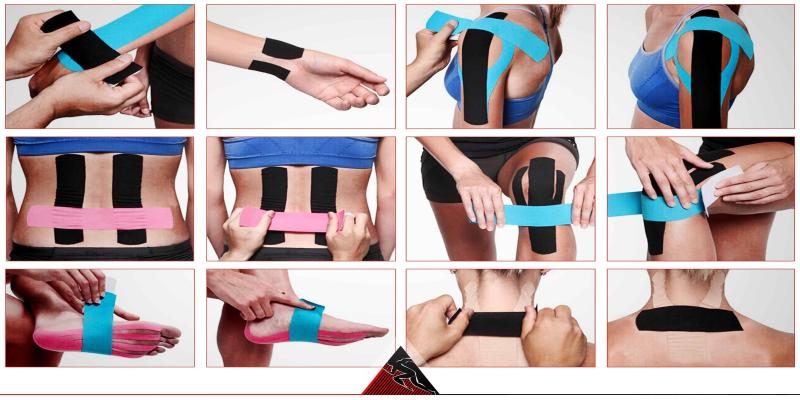
Kinesiology Taping Technique: What It Is and How It’s Used
In recent years, brightly colored strips of tape on athletes' shoulders, knees, and backs have become a familiar sight in professional sports, fitness centers, and physical therapy clinics. This isn’t a fashion statement—it's kinesiology taping, a therapeutic technique that supports muscles and joints without restricting movement. But how does it work? And who can benefit from it?
What Is Kinesiology Taping?
Kinesiology taping involves the application of a specially designed elastic tape—known as kinesiology tape—to the skin to facilitate the body’s natural healing process. Developed by Dr. Kenzo Kase in the 1970s, this method differs from traditional athletic taping by focusing on movement support rather than immobilization.
The tape itself is made from cotton and spandex with an acrylic adhesive that mimics the elasticity of human skin. This allows it to stretch with the body and stay on for several days, even through sweat, showers, and physical activity.
How Does It Work?
Kinesiology taping is believed to work through a combination of mechanical, neurological, and circulatory effects. Here’s a breakdown:
Applications of Kinesiology Taping
Kinesiology taping is incredibly versatile and can be used in a variety of clinical and athletic settings. Some of its most common applications include:
1. Pain Relief
Kinesiology tape is often used to manage acute and chronic pain conditions, like:
It doesn’t treat the root cause directly, but it can provide short-term relief and functional support.
2. Injury Prevention and Recovery
By improving muscle activation and joint alignment, the tape helps prevent overuse injuries. It’s also a staple in rehab programs for:
3. Postural Support
For individuals with postural issues, kinesiology taping can act as a tactile reminder to maintain proper alignment throughout the day, making it useful for people with desk jobs or sedentary lifestyles.
4. Athletic Performance
Many athletes use kinesiology tape to support muscles during activity without losing flexibility. It can enhance muscle endurance, improve proprioception, and reduce fatigue.
5. Swelling and Lymphatic Drainage
By promoting lymphatic flow, kinesiology tape is used in managing lymphedema, bruising, or swelling after surgery or injury.
Does It Really Work?
Scientific research on kinesiology taping has produced mixed results. Some studies report significant benefits in pain relief, swelling reduction, and functional improvement—especially when used alongside other therapies like manual therapy, exercise, or physical rehabilitation.
However, it’s important to note:
Who Should Use It?
Kinesiology taping is suitable for:
It’s always best to consult with a trained professional, such as a physical therapist, chiropractor, or sports medicine practitioner for proper assessment and application.